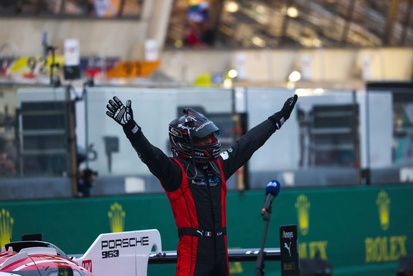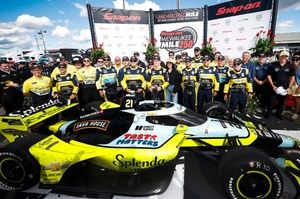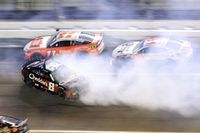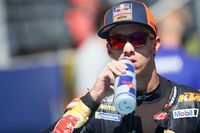Point 'Brake': The complexities behind Porsche's 963 hypercar braking system
A new car in a new class for the WEC and IMSA hypercar classes wasn't the only trial for Porsche Penske Motorsport to tackle. The new hybrid system married to a 918-inspired V6 engine has made the manufacturer literally "rewrite" some of the code for race day
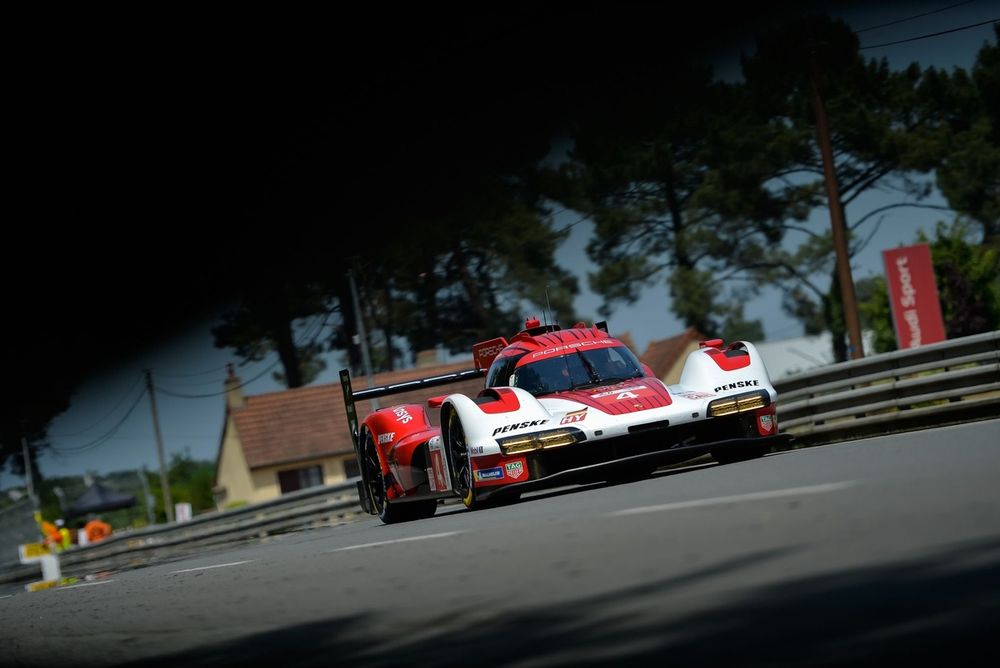
#4 Porsche Penske Motorsport Porsche 963: Felipe Nasr, Nick Tandy, Pascal Wehrlein
Photo by: Marc Fleury
Stopping an LMDh car is just as hard as getting it going. Sure, they’ve got four brakes, but these cars are hybrids, which means you also have regenerative braking. Plus adjustments for engine braking. This makes everything infinitely more complicated for teams, drivers, and suppliers, and frankly, a lot more interesting.
Conceptually, the LMDh braking system is a lot like what’s used in Formula 1. The front brakes are purely hydraulic. But since the hybrid system is at the back, LMDh cars use a brake-by-wire system, Bosch’s Electronic Braking System (EBS) to manage the handoff between friction, regenerative, and engine braking at the rear of the car. Bosch also provides the Motor-Generator Unit (MGU), inverter, and control software for the spec hybrid system in LMDh.
(Le Mans Hypercar regulations allow for an electric front axle, so the braking system on the likes of the Ferrari 499P and Toyota GR010 are very different from what’s described here.)
“With our EBS system, there are different modes and the one that’s used in LMDh is pressure-based,” says Jordan Krell, senior calibration engineer for Bosch Motorsport. “So they send a pressure request to us and that’s what we hit at the brake perspective. So from the OEM perspective on LMDh, it gives them a lot of flexibility on braking strategies. It’s a really open playbook for them to develop a lot of controls.”
“It’s quite complex but it’s where teams can make a difference because you can tune it for every single event,” says Porsche Penske Motorsportdriver Felipe Nasr. “Depending on the grip level, if it’s raining, if the track is evolving as the week goes on, you can always revisit those settings.”
LMDh cars — like most every race car — have adjustable brake bias, which proportions the amount of braking front-to-rear. Under braking, the weight of the car shifts forward, increasing the load on the front tires and decreasing the load at the rear. With more front bias, that load shift is more prominent, giving the car a looser feel, more oversteer on corner entry and promoting rotation; with more rear bias, the shift is less dramatic, helping stabilize the car and inducing understeer.

The brake discs glowing after a braking zone on the #5 Proton Competition Porsche 963: Neel Jani, Tristan Vautier, Nico Pino, Julien Andlauer
Photo by: Porsche
The use of brake-by-wire enables a really neat feature, brake migration. “It’s dynamic brake bias on the pressure side,” explains Krell. You can use the car’s electronics to shift the brake bias as the car slows into a corner.
“We have brake migration shaping,” Nasr says, “which is either when you are in longitudinal braking or lateral braking. That affects how much the shift of the total bias is going rearwards as you steer the car.”
That brake-migration shaping is cockpit-adjustable to suit both driver preferences and track conditions. Nasr says there are plus and minus settings for longitudinal braking, braking in a straight line, and lateral braking, braking with some steering dialed in. Throughout a lap, he’ll make a handful of adjustments to overall brake bias and migration shaping tailored to each corner.
But with LMDh, it’s not just the shift from front to rear bias. Across the rear axle, the EBS is constantly juggling the braking force between the discs, MGU, and internal-combustion engine. There’s no specific limits on the level of energy recuperation, but the amount of energy you can feed back into the battery depends on state of charge (SoC), and the limitations of the MGU itself, which is capable of about 180 kilowatts (241 horsepower) in total. Throughout the course of a lap, and a stint, the battery SoC changes almost constantly as you use the MGU to both propel and slow the car down. So there’s no fixed level of regenerative vs friction vs engine braking.
“What’s really unique about the LMDh platform is we put a lot of that into the team’s hands,” says Krell. “What they send to us is a braking torque request for how much negative torque you want to generate on the MGU, and they’re able to control the pressure they want at the caliper…. That’s something that, depending on your SoC, the balance they want between brake temp, SoC, and how they’re using their energy-management strategy throughout a lap, they’re able to blend that.”
There are cases where some of the braking at the rear is purely hydraulic if the battery SoC is particularly high. But you also might use a bit more regenerative braking to manage temperatures, as Krell says, or even to manage wear. Krell also notes that in some of the hardest braking events, like turn one at Indianapolis, you might see as much as 40 percent of the total braking at the rear come from the MGU.

#6 Porsche Penske Motorsport Porsche 963: Mathieu Jaminet, Matt Campbell
Photo by: Art Fleischmann
LMDh drivers have to think a lot about the braking system and understand how it works, but they ultimately need seamless, consistent performance. They need to be able to outbrake their rivals from 200 mph without the system doing anything funky or giving them miscues. If you’ve ever driven a hybrid or electric car with a brake-by-wire system, you know that the brake pedal can sometimes feel odd since it has to simulate what is otherwise done mechanically. Bosch offers a pedal-feel emulator, and it’s down to the automaker to work with the supplier on tuning it to give drivers what they want.
“When you’re driving a purely hydraulic brake, you as the driver have the feeling that ‘Ok, this is the maximum input, now I can feel the rear locking,’ So what do you do? You just release the brakes at that point,” Nasr explains. “Whereas in the brake-by-wire, the system is also trying to compensate, so it’s best that the driver has more control over the brake pedal than anything else, you’re trying to minimize those interferences.”
Nasr says the 963 has gotten easier to drive thanks to a few years of development since its 2023 competition debut. But big braking zones are still a challenge.
“The longer brakes are always the trickiest because there’s a lot more going on the system trying to read all that, and at the same time combining the transition phase of the braking, and the diff, and the MGU, and trying not to lock any of the tires,” he says. “The bigger the braking, the trickier it gets for us drivers and the system.”
Also tricky was making it work in the first place. One would think that of all of the LMDh constructors, Porsche would have a leg-up in making this braking system work, since it did blended braking in the 919 LMP1 car. But Stefan Moser, technical director for the Porsche LMDh program said it wasn’t so easy.
“Obviously, when we started this project, we thought we kind of knew how to integrate the hybrid into such a race car, but, we really learned that there are a lot of differences,” Moser says. “It’s a lot of paying attention to the details if the [MGU] is on the front axle or on the rear axle. We did a significant part of the code over again.”
There’s a complexity here that’s hard to wrap your head around, and it’s proof that despite LMDh cars all using the same hybrid hardware, each car is very different from one another. It’s also proof that LMDh racers are among the true elites, both in understanding how the system works, and the many, many ways they can manipulate it across a lap, a stint, a race distance to get different results.
And if this is hard for Porsche, imagine the challenge for all the others joining the LMDh field in the coming years.
Share Or Save This Story
Top Comments
Subscribe and access Motorsport.com with your ad-blocker.
From Formula 1 to MotoGP we report straight from the paddock because we love our sport, just like you. In order to keep delivering our expert journalism, our website uses advertising. Still, we want to give you the opportunity to enjoy an ad-free and tracker-free website and to continue using your adblocker.
